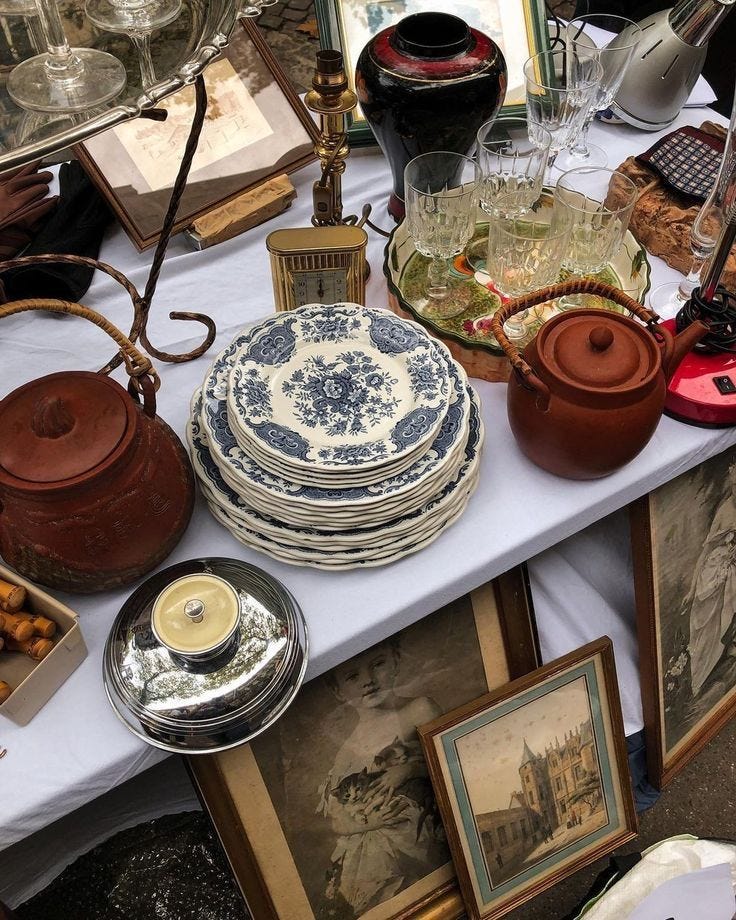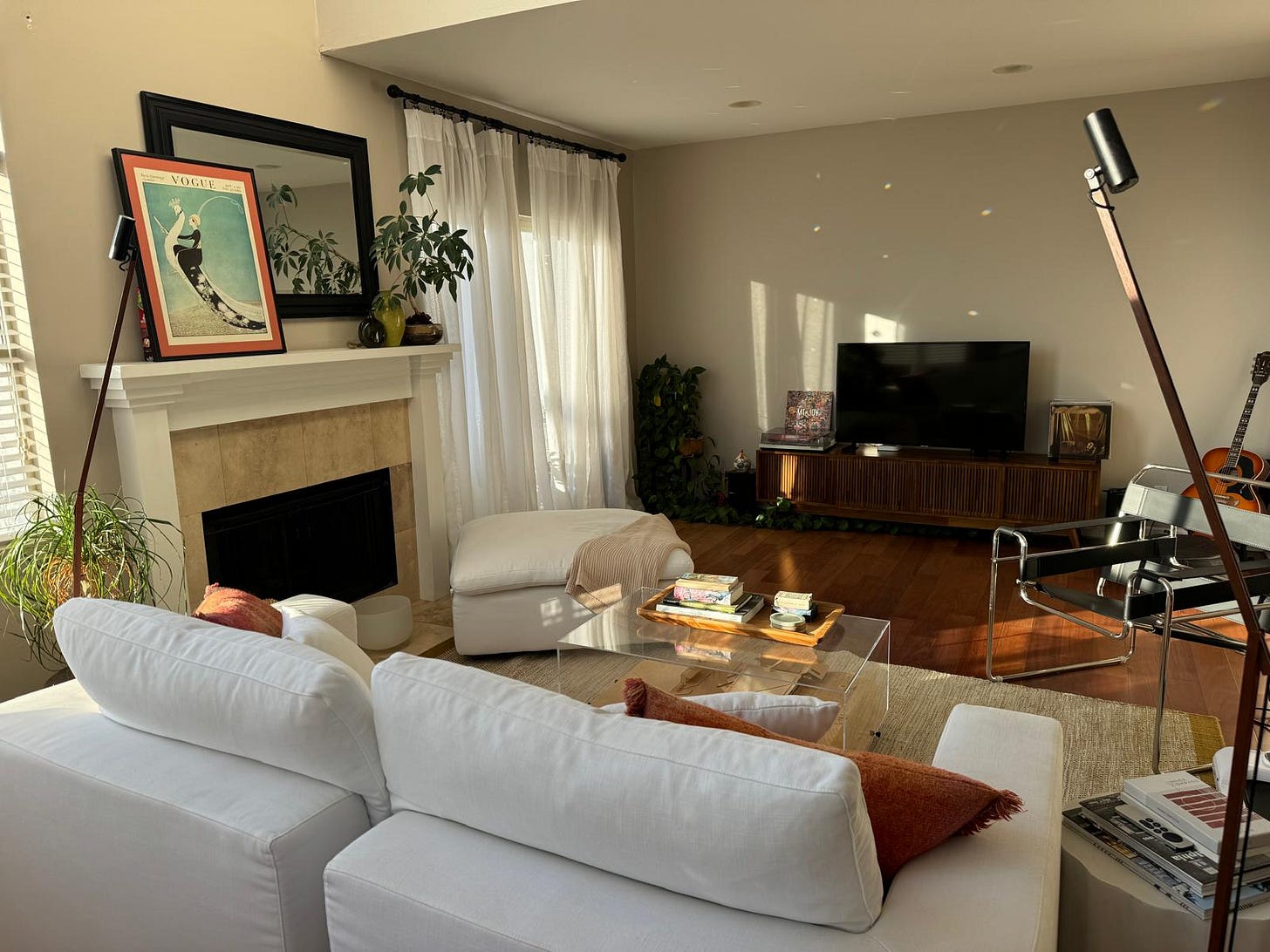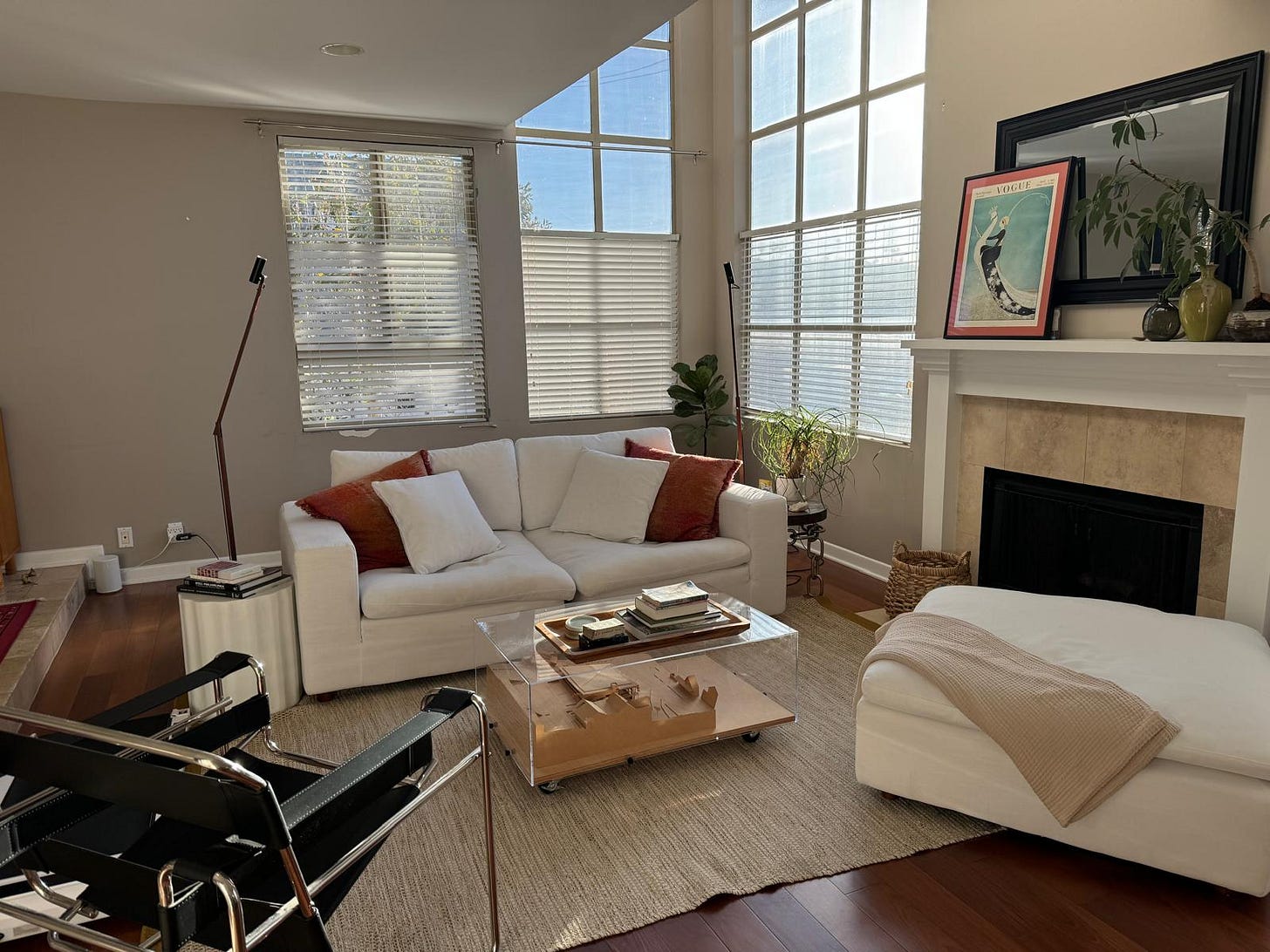The Lived-In Ratio: My Totally Made-Up (but Very Useful) Formula for Curating Your Home
Your home doesn't need to be "finished" to be felt.
A friend once described my home decor preferences as “Mid-century meets Japandi moves to Southern California.” My husband and I looked at each other like, Oh no… she’s not wrong. Are we that predictable? And then we laughed, because behind the initial worry that we could be pinned down so quickly, confined within these four walls (literally and aesthetically), was the very real comfort in being truly seen and known for what we love. Isn’t it great that we’re predictable?
Because here’s the thing: when a home truly reflects you, it becomes obvious. It doesn’t look like it was styled to fit a trend. It may take inspo from known trends or ‘aesthetics,’ but it feels like it naturally belongs to you. There’s a moment when you step into someone’s home, and everything just fits. It’s not that the space is perfect, or that every item is expensive or straight from a designer showroom. It’s that the space feels lived-in. Like it has a heartbeat. Like it tells a story.
But getting there? That can feel overwhelming. The pressure to make a home look intentional (without looking overly curated), cohesive (without being too matchy), and stylish (without sacrificing comfort) is real.
That’s the kind of home I want to create (again, once we move in somewhere officially). And yet, the process of curating a space with depth, character, and that little extra *something* that feels entirely yours isn’t built in a day. But the very idea of knowing where to start, especially when you’re staring at a completely empty room, paralyzed by decision fatigue, or scrolling way too many interior design posts that make you question everything, can be enough to stop you from starting in the first place (been there).
And if you ask me, that’s a real shame because, as creative people, our homes deserve to be an extension and reflection of our radiant energy, and you deserve to be recognized for who you are.
So, in an effort to keep myself patient and intentional as I collected pieces for my own home, I made up a totally unofficial, but highly effective, framework: The Lived-In Ratio.
Is it backed by years of design research? No.Does it work? I think so.
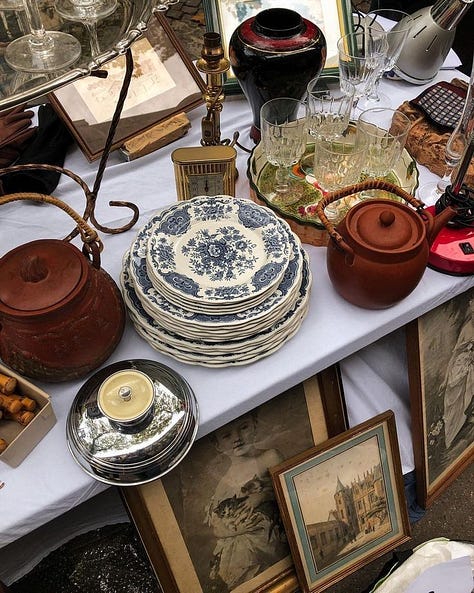
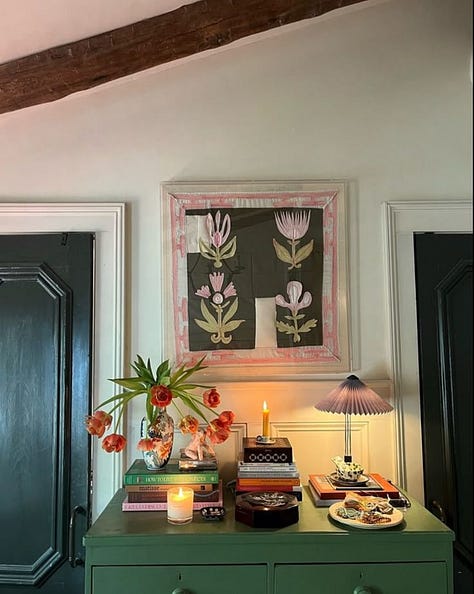
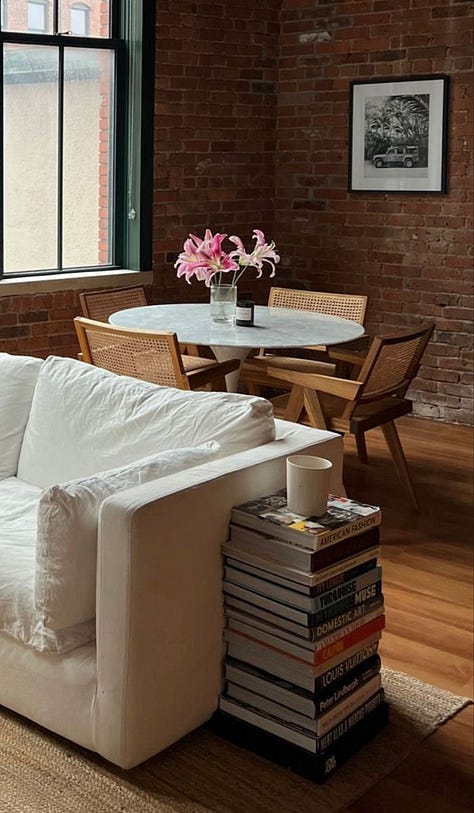
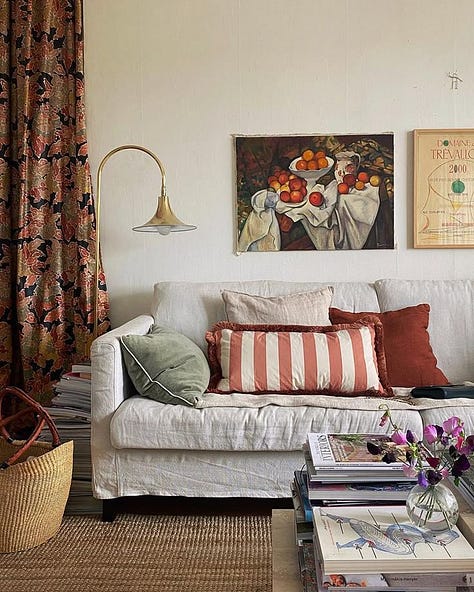
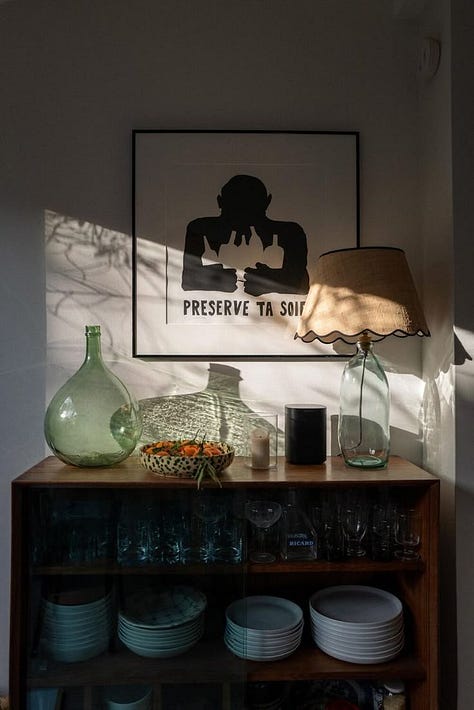
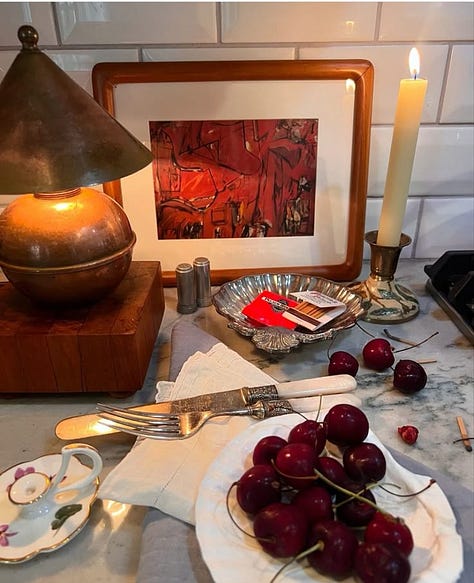
Does it bring intuition back to your space? Yes, and layers. Layers of energy, and layers of personality. Am I hoping you carry this with you every time you rearrange your bookshelves or impulse-buy a vintage lamp? Also yes.
The Breakdown: What is the Lived-In Ratio?
I realized that a well-balanced home is usually made up of:
50% Mindfully Collected Decor (The Soul of the Space)
30% Quality & Timeless Treasures (The Foundation Pieces)
20% Functional & Transitional Necessities (The Stuff That Just Needs to Work for Now)
The Invitation
The intention here isn’t to audit your entire space in one sitting and overwhelm yourself to the point that you don’t know where to start. It’s to start with one piece per section to take stock of what fits where and how you feel about it today.
Let’s break it down further and apply it to YOUR space:
50% Mindfully Collected Decor: The Soul of Your Space
The character, the charm, the story-filled weirdness.
These are the items that weren’t mass-produced last season and sold to everyone at the same time via Tiktok Shop or some influencer’s Amazon storefront. Instead, they were gathered—sometimes intentionally, sometimes by accident. They’ve lived a life before they came to you.
Picture:
Thrift store and estate sale treasures
Hand-me-downs from family
DIY projects that were either genius or required a little extra patience
Travel souvenirs that make you smile every time you see them
Gifts from friends that hold sentimental value
Vibe Check
Take a look around your space. Identify one item that falls into this category—something that has a story. Now, ask yourself:
If you saw this in a store today, would you pick it? (Maybe. Maybe not.)
What makes it work in your home?
What’s the little quirk about it that adds flavor?
Would your space feel less you without it?
The best homes aren’t perfectly curated. They don’t “match”. Even our favorite Architectural Digest home tours don’t work because everything matches. The most interesting homes (Kendall Jenner, Dakota Johnson, for instance) use juxtaposition and contrast to add depth, visual intrigue, and personality that reflect its home owner.
The most predictable memorable homes have pieces that might not make sense or even appeal to you on their own but, together, make the space sing rather than feel stale. The hodge-podge feels human.
30% Quality & Timeless Treasures: The Foundation Pieces
Now, let’s talk about the pieces that ground everything. The things you’d move from home to home. The staples.
These are the investment pieces—the ones you thought about before buying. You read reviews, you waited for a sale to pass through your inbox before hitting “add to cart”. Maybe you saved up for them, or maybe you just knew, deep down, that this piece was the one.
Think:
A really well-made couch
A dining table that could last generations
Lighting fixtures that set the tone for the whole room
A high-quality rug that doesn’t fall apart in a year
Vibe Check
Identify one piece in your home that you consider an investment. Now, ask yourself:
Why did I choose this?
What makes it timeless to me? Is it the design? The material? The craftsmanship?
Does it reflect something about my home values? (Do I prioritize comfort? Longevity? Classic over trendy?)
Recognizing what you invest in and why can tell you a lot about your personal home style. And once you know what’s worth spending on, it makes future purchases much clearer and the risk of impulse-buying the trendy mirror you’ll probably outgrow in a season much lower.
20% Functional & Transitional Necessities: The Stuff That Just Needs to Work
This category is for the things that might not be thrilling but make life easier.
In case you need to hear it, not everything needs to be a forever piece. Some things are just there to serve a purpose—until you can replace them with something better.
Think:
A bookshelf that’s currently doing its job but might not make it to the next move
A budget-friendly dining chair set because you haven’t found the one yet
Storage solutions that work but don’t necessarily wow
Key Takeaway
There’s nothing wrong with having transitional pieces. Home is flexible, and so is this ratio. These items don’t define your space—they just make it livable while you continue curating.
But here’s the thing—if your whole home were filled only with these pieces, it wouldn’t feel like your home. It would just be a space you exist in, not one you really experience.
You know that feeling when you see something—a chair, a piece of art, even a funky little ceramic bowl—and for whatever reason, you feel it? Like something in you recognizes it before you even rationalize why you love it? Listen to that feeling. That’s the good stuff. That’s what makes a home feel layered, personal, and interesting.
If you never have that moment, if everything in your home just functions without ever making you pause and admire it, then something’s missing. But now you know and you can continue to use the Lived-In Ratio until you start to feel a shift in your space. The goal isn’t to have every single item be an investment or a treasure—it’s to make sure you leave enough space for the things that actually move you.
The Lived-In Ratio in My Own Home
Now, because I love to practice what I preach, I’m going to take you on a tour of my (old) living room and break down exactly where each item fits into the Lived-In Ratio.
Since now you have the framework, I figured I’d show you what it looks like in action. Here’s a peek at our old living room and how each piece fits into the 50/30/20 formula. Some we still have, some we’ve moved on from—but all of them helped us better understand our style.
⬇️ Subscribe below to access the full breakdown! ⬇️
Keep reading with a 7-day free trial
Subscribe to Intuitive Living with Kate Van Horn to keep reading this post and get 7 days of free access to the full post archives.





